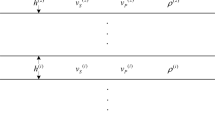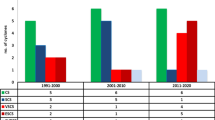Abstract
OSMAR071 is the latest product of the OSMAR (ocean state monitor and analysis radar) series of high frequency surface wave radar (HFSWR), which was developed by the Radiowave Propagation Laboratory of Wuhan University. It adopts a modified Barrick waveheight inversion model. The modifications are introduced to improve the model’s performances under the effect of noises and interferences and in the case of broad beam radar detection. The two unknown coefficients in the modified model are figured out by fitting the HFSWR significant waveheight results to those output from a wave buoy located in the radiating coverage of the radar site. The model is applied to inverse the waveheights from radar data for the duration from Dec. 1st, 2008 to Feb. 25th, 2009, and then the radar waveheights are compared with the buoy measurements. Results show that the rms difference between radar-derived significant waveheights and those from the buoy is 0.38 m and the correlation coefficient between the two series is 0.66. This study describes OSMAR071 observation of significant waveheight with relatively satisfactory accuracy during about three months.
Similar content being viewed by others
References
Barnes L. HF Radar—The Key to Efficient Wide Area Maritime Surveillance[M]. 3rd Ed., London: ICG Publishing LTD, 1998: 115–118.
Barrick D E. 30 Years of CMTC and CODAR[C] //Proceedings of the IEEE/OES/CMTC 9th Working Conference on Current Measurement Technology. Charleston: IEEE Press, 2008: 131–136.
Barrick D E, Headrick J M, Bogle R W, et al. Sea BackScatter at HF: Interpretation and Utilization of the Echo[J]. Proceedings of the IEEE, 1974, 62(6): 673–680.
Derr V E. Remote Sensing of the Troposphere [M]. Washington D C: U S Government Printing Office, 1977.
Barrick D E. Extraction of Wave Parameters from Measured HF Radar Sea-Echo Doppler Spectra[J]. Radio Science, 1977, 12(3): 415–424.
Wyatt L R, Holden G J. Developments in Ocean Wave Measurement by HF Radar[J]. IEE Proceedings-F, 1992, 139(2): 170–174.
Heron S F, Heron M L. A Comparison of Algorithms for Extracting Significant Wave Height from HF Radar Ocean Backscatter Spectra[J]. Journal of Atmospheric and Oceanic Technology, 1998, 15(6): 1157–1163.
Lipa B J, Barrick D E. Extraction of Sea State from HF Radar Sea Echo: Mathematical Theory and Modeling[J], Radio Sci, 1986, 21(1): 81–100.
Wyatt L R. The Measurement of the Ocean Wave Directional Spectrum from HF Radar Doppler Spectra[J]. Radio Sci, 1986, 21(3): 473–485.
Howell R, Walsh J. Measurement of Ocean Wave Spectra Using Narrow-Beam HF Radar[J]. IEEE Journal of Oceanic Engineering, 1993, 18(2): 296–305.
Hisaki Y. Ocean Wave Directional Spectra Estimation from an HF Ocean Radar with a Single Antenna Array: Observation[J]. Journal of Atmospheric and Oceanic Technology, 2006, 23(2): 268–286.
Green J J, Wyatt L R. Row-Action Inversion of the Barrick-Weber Equations[J]. Journal of Atmospheric and Oceanic Technology, 2006, 23(3): 501–510.
Hou Jiechang, Wu Shicai. Remote Sensing of Ocean Surface Currents by HF Radar[J]. Chinese Journal of Geophysics, 1997, 40(1): 18–26(Ch).
Wu Xiongbin, Yang Shaolin, Wu Shicai, et al. Ocean Surface Currents Detection at the Eastern China Sea by HF Surface Wave Radar[J]. Chinese Journal of Geophysics, 2003, 46(3): 340–346(Ch).
Yang Shaolin, Ke Hengyu, Wu Xiongbin. Verification Tests of OSMAR HFSWR at the Eastern China Sea[J]. IEEE Journal of Oceanic Engineering, 2005, 30(3): 601–617.
Zhu Dayong, Li Li, Li Yan, et al. The Taiwan Strait South-West of the Seasonal Variation of Surface Currents by HF Ground Wave Radar Observation[J]. Chinese Science Bulletin, 2008, 53(11): 1339–1344(Ch).
Wyatt L R, Green J J. The Availability and Accuracy of HF Radar Wave Measurements[C]//Geoscience and Remote Sensing Symposium, IGARSS’02. Toronto: IEEE Press, 2002: 515–517.
Howell R, Khandekar M. Measuring Ocean Surface Wave Using HF Ground Wave Radar: Validation Against a Wave Model[J]. Canadian J Remote Sensing, 1993, 19(1): 102–109.
Author information
Authors and Affiliations
Corresponding author
Additional information
Foundation item: Supported by the National High Technology Research and Development Program of China (863 Program) (2001AA631050), the National Natural Science Foundation of China (60571065) and Open fund of State Key Laboratory of Offshore Marine Environment (Xiamen University)
Biography: WU Xiongbin (1968–), male, Professor, Ph.D., research direction: HF radio marine remote sensing.
Rights and permissions
About this article
Cite this article
Wu, X., Li, L., Shao, Y. et al. Experimental determination of significant waveheight by OSMAR071: Comparison with results from buoy. Wuhan Univ. J. Nat. Sci. 14, 499–504 (2009). https://doi.org/10.1007/s11859-009-0608-8
Received:
Published:
Issue Date:
DOI: https://doi.org/10.1007/s11859-009-0608-8




